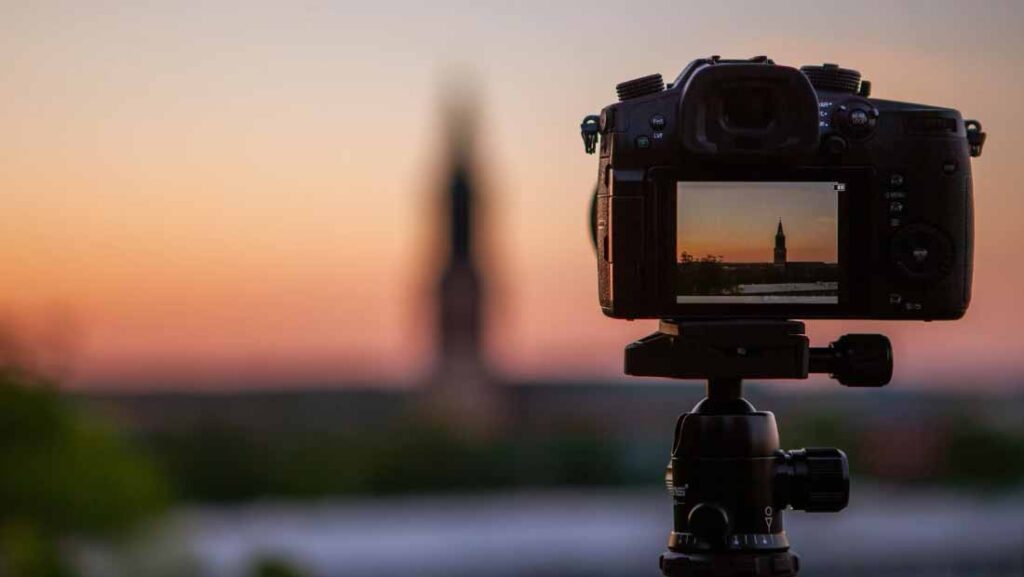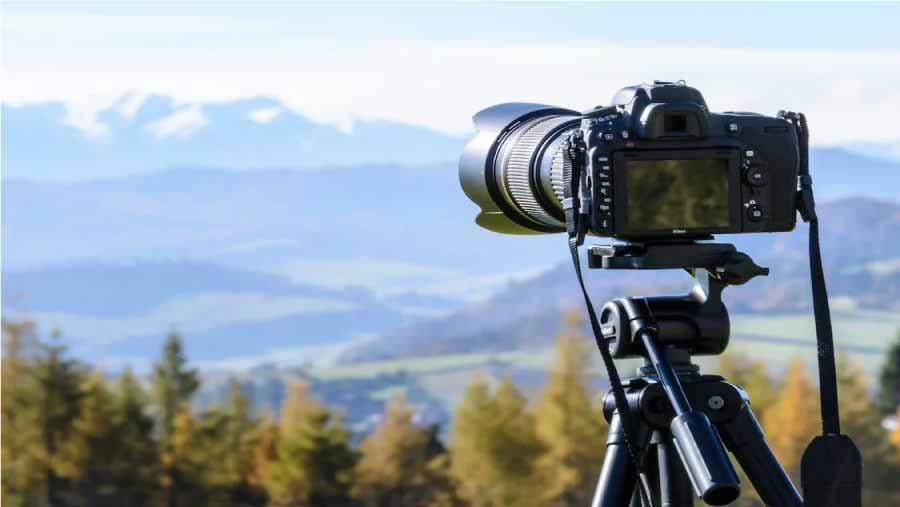Photographic composition is the art of organizing the visual elements within the image to create a visually appealing and coherent story. The framing technique is an important tool to achieve a good composition, as it allows you to select and place the elements in the image in the most effective way.
Here are some framing and photo composition techniques that can improve your photographs:
Framing techniques in photographic composition
Framing is one of the most important techniques in photography, as it allows the photographer to select what he wants to show within the frame and communicate a specific story or message to the viewer. Here are some common framing techniques used in photography:
Rule of thirds
This technique involves dividing the image into thirds horizontally and vertically, resulting in nine sections. The subject of the photograph is placed at one of the intersections of the lines to create a balanced and attractive composition.
It is one of the most basic and common rules in photography. Divide the image into three equal parts, both horizontally and vertically, forming nine sections. The point where the lines cross is where you should place the most important element of the image, as it attracts more attention. In this way, a more balanced and attractive image is achieved.
The rule of thirds is a photographic composition technique that consists of dividing the image into nine equal parts, using two horizontal lines and two vertical lines that intersect at four points. These intersection points are called “strengths” or “points of interest.”
The idea behind this technique is that intersection points are the natural places where the human eye tends to focus, making the image more visually appealing and balanced. In fact, an image that follows the rule of thirds is considered to be more attractive and balanced than an image that does not.
When applying the rule of thirds, it is recommended to place the main elements of the image at or near the intersection points, rather than in the center of the image. This creates a sense of balance and harmony in the image.
In a guide
It is important to note that the rule of thirds is not a rigid rule, but rather a guide. In some cases, it may be more effective to ignore the rule of thirds and place the main elements of the image in the center. Therefore, you should always experiment and find the best form of composition for each image.
Symmetry and asymmetry in photographic composition
Symmetry refers to the visual equality between two opposite parts of an image. This can be a horizontal symmetry, where an image is divided into two equal parts on the horizontal axis, or a vertical symmetry, where the image is divided into two equal parts on the vertical axis. Symmetry can be very visually appealing, as the human brain finds symmetry and patterns visually appealing and pleasurable.
Asymmetry, on the other hand, refers to the lack of symmetry in an image. Instead of having a visual equality between two opposing parts, the asymmetry creates a sense of visual balance through the distribution of the visual elements in the image. Asymmetry can be very effective in creating a dynamic and visually interesting image.
It is important to note that both symmetry and asymmetry can be used to create different visual and emotional effects in an image. Symmetry can convey a sense of order, stability, and serenity, while asymmetry can create a sense of movement, tension, and excitement.
Ultimately, the choice between symmetry and asymmetry will depend on the type of image you want to create and the effect you want to convey. If you want to create a calm and balanced image, symmetry may be the best option. If you want to create a more dynamic and exciting image, asymmetry can be more effective. In any case, it is important to experiment and find the best form of composition for each image.
Contrapicado
This technique involves taking the photograph from an angle lower than the subject, which creates a sense of grandeur and power. It is commonly used in architectural and portrait photography.
Chopped
Unlike back, chopping involves taking the picture from an angle higher than the subject, which creates a sense of vulnerability and smallness.
Foreground
The foreground is used to highlight a specific object or detail in the image. The object is placed close to the camera and takes up most of the frame.
General plan
The general shot shows the subject of the photograph in its surroundings. It is used to create a sense of context and location.
Detail plan
The detail plane is used to highlight a specific object or detail in the image. The object is placed in the center of the frame and takes up most of the visual space.
These are just a few of the most common framing techniques in photography. It is important to remember that the framing must be chosen to communicate a specific story or message and must be unique to each situation and subject.
The Horizon Line
The horizon line is an important tool in landscape composition and outdoor photography. The location of the horizon line can change the perception of image depth and direction of movement. If placed in the upper half of the image, the view will appear wider and deeper. If placed in the lower half of the image, the view will appear closer and closer.
Symmetry and patterns
Symmetry and patterns are very powerful visual tools. The human brain finds symmetry and patterns visually appealing and pleasurable. Use repetitive patterns in the image to create an interesting and harmonious visual effect.
Depth
Depth is an important tool in landscape composition and outdoor photography. It uses perspective and objects that are close to the camera to create a sense of depth. This way, foreground elements will appear larger and background items will appear smaller.
The framing
The choice of framing is an essential tool in photographic composition. It uses different framing techniques to create interesting effects, such as:
The closed frame in photographic composition
Place the main object of the image in the center and framed by surrounding elements. This type of framing can be very useful for highlighting an object or a face.
Open framing in photographic composition
This type of framing allows the inclusion of elements that enlarge the image. It is ideal for photographing landscapes and natural environments.
Diagonal framing in photographic composition
This technique creates a sense of movement in the image. Use image diagonals to create a dynamic visual effect.
Framing focused on photographic composition
This technique places the main object of the image in the center of it. It’s useful when you want to emphasize the symmetry of an object or when the main object is large enough to fill the image.
These are just some of the framing and compositing techniques you can use to enhance your photographs. Remember that creativity is key and that you must experiment to find your own style.


